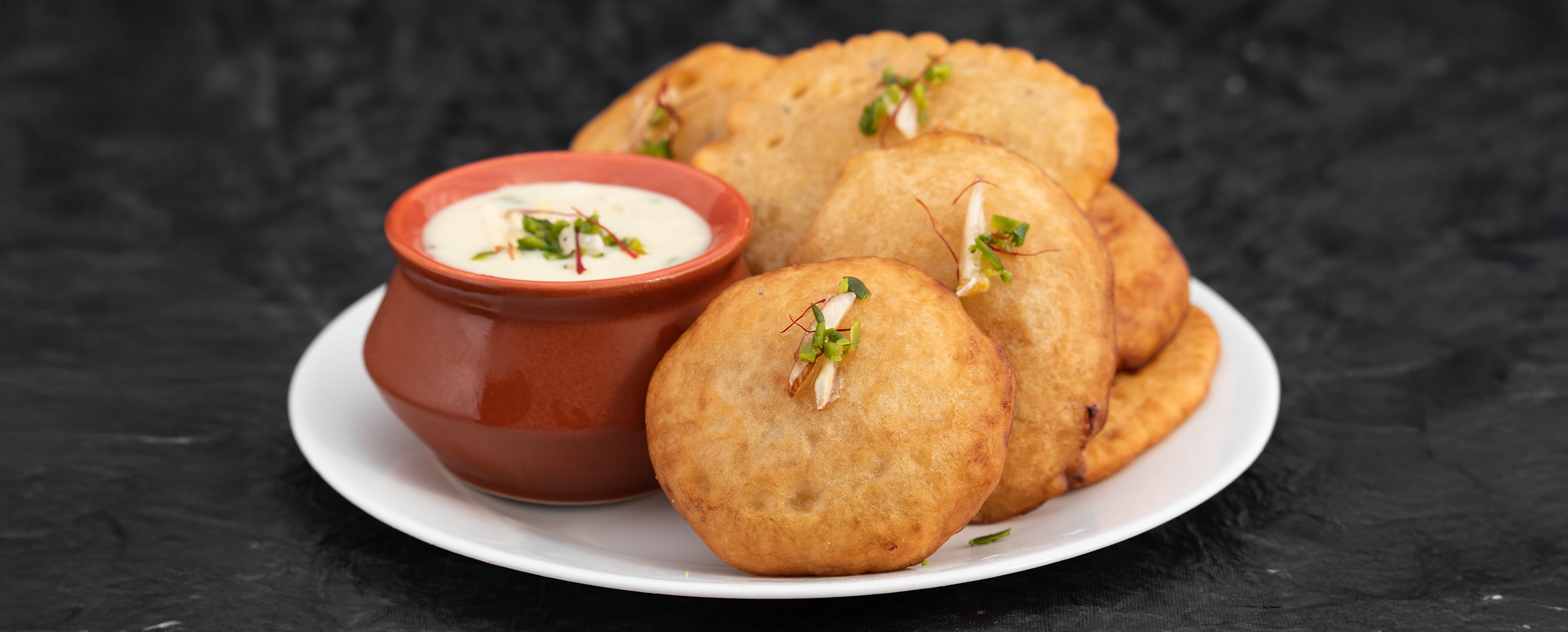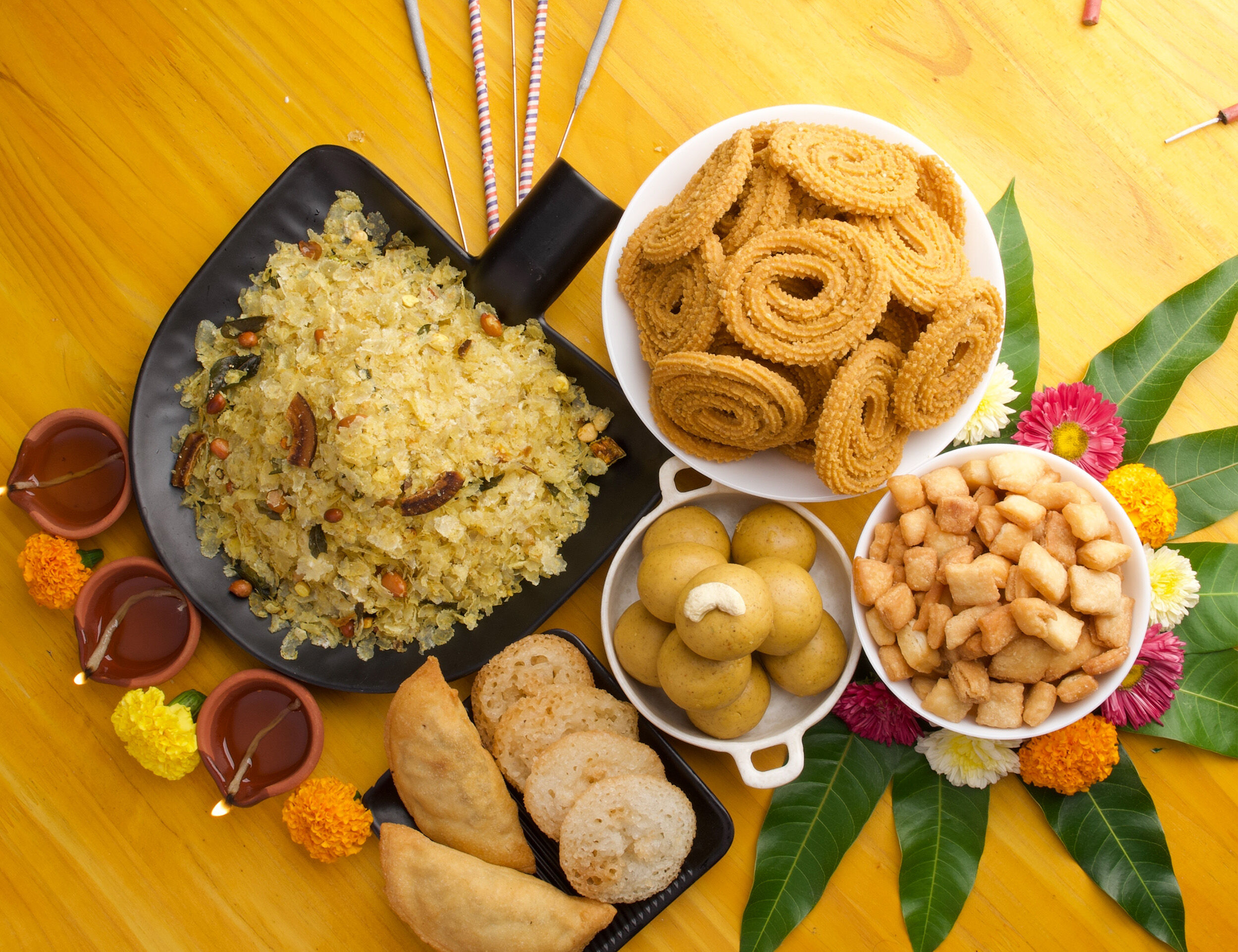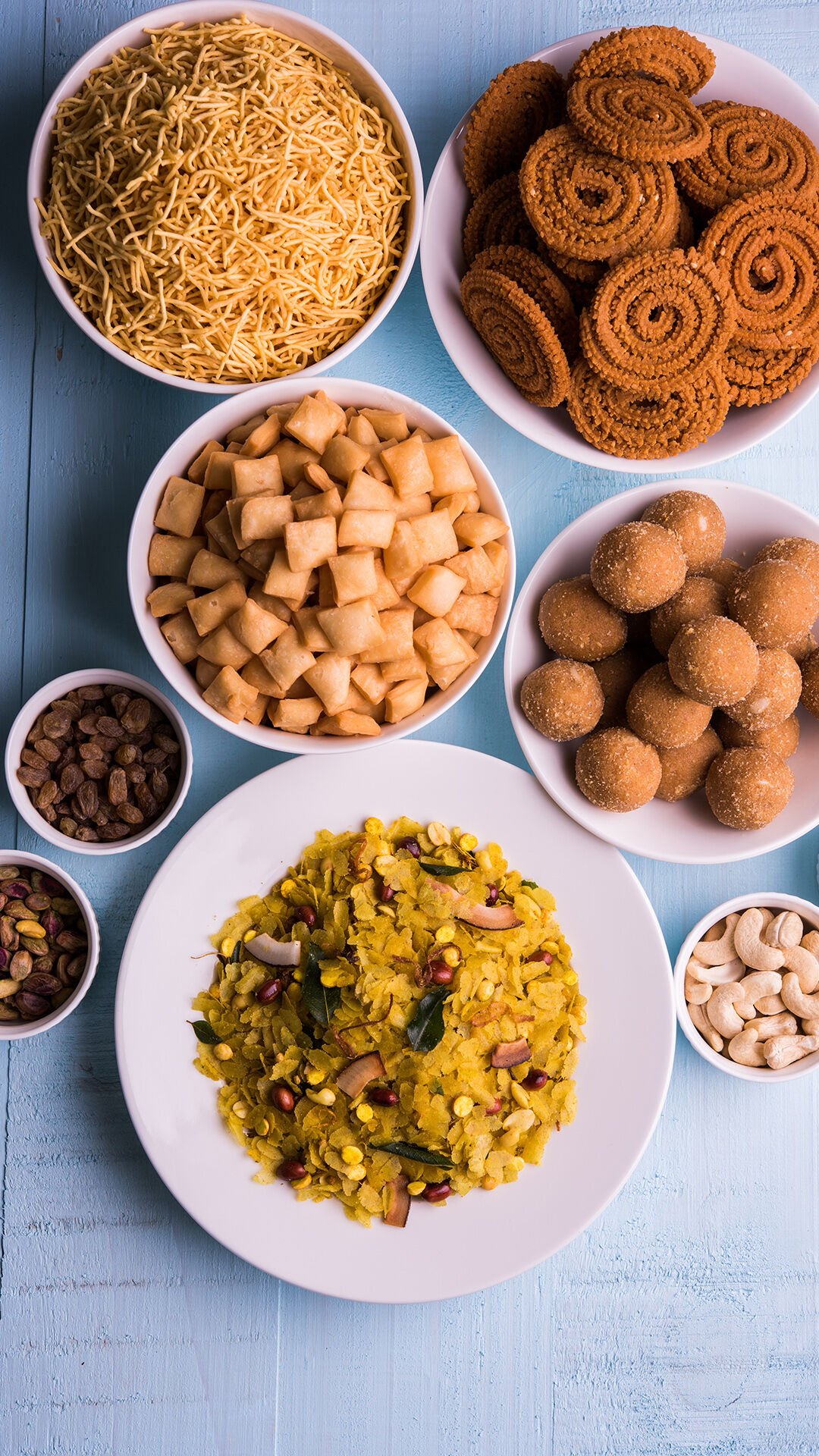STORIES BY DIWAS

Lifestyle
Sweet & Savoury: A Pan-Indian Traditional Diwali Food Adventure
Date 25 September 2025 Reading time: 7-10 mins
The aroma of freshly fried jalebis mingles with the sweet scent of khoya-stuffed gujiyas while the kitchen buzzes with laughter and the rhythmic sounds of grinding, mixing, and stirring. Traditional Diwali food preparation begins weeks before the festival, with families gathering to create feasts that have been passed down through generations.
Whether you're hosting your first Diwali party post-wedding or joining your in-laws for festive celebrations, knowing about traditional Diwali food from different regions helps you appreciate the diversity of our culinary heritage.
The Significance of Traditional Diwali Food
Traditional Diwali food carries meanings that go beyond taste and nutrition. Each sweet symbolises the sweetness we wish to bring into our lives, while the act of sharing mithai with neighbours strengthens community bonds. The preparation itself becomes a ritual, with families coming together to create Diwali food items that have graced their tables for centuries.
In many households, the first batch of sweets is offered to Lakshmi, the goddess of prosperity, before being distributed among family and friends. Diwali celebration food varies based on regional beliefs and customs.
Modern celebrations blend ancestral recipes with contemporary twists. Young couples hosting their first Diwali often combine regional specialities from both families, creating fusion food lists for Diwali that honour multiple traditions. This evolution keeps the festival relevant while preserving its essence.
Traditional Diwali Recipes from North India
North Indian Diwali tables groan under the weight of milk-based sweets and ghee-laden delicacies. The star of the show remains gujiya, those crescent-shaped parcels filled with khoya, dry fruits, and coconut.
Preparation for traditional Diwali food in North India often starts with making khoya at home. This milk solid forms the base for countless sweets, from the melt-in-your-mouth kaju katli to the syrup-drenched gulab jamuns.
The savoury side features equally impressive options:
Mathri - Flaky, crispy rounds flavoured with ajwain and black pepper
• Namak pare - Diamond-shaped salty treats that pair perfectly with evening chai
• Shakkar pare - Sweet version coated with crystallised sugar
• Dahi bhalle - Soft lentil dumplings soaked in spiced yogurt
Food ideas for a Diwali party in North India include rich gravies and stuffed breads. Paneer dishes like shahi paneer and palak paneer grace the table alongside dal makhani - that creamy black lentil preparation slow-cooked overnight. The bread basket overflows with puris, naans, and stuffed parathas, each adding its own texture to the feast.
For those celebrating their first Diwali after marriage, North Indian families often prepare special Diwali food recipes passed down through generations.
Traditional Diwali Recipes from South India
South Indian traditional Diwali food showcases the region's love for contrasting flavours and textures. Unlike the milk-heavy sweets of the North, South Indian treats rely on jaggery, coconut, and rice flour for their distinctive taste.
Tamil Nadu's special food for Diwali includes making specific sweets in odd numbers - usually seven or nine varieties. This custom, called "Diwali lehiyam," features classics like adhirasam, those golden-brown rice flour and jaggery fritters that require fermenting the batter for the perfect texture.
Each family has preferences for their payasam - some swear by the creamy pal payasam made with milk and rice, others prefer the jaggery-sweetened paruppu payasam with its earthy flavours.
Kerala brings its own festive flavours:
• Unniyappam - Small, round fritters made with rice, jaggery, banana, and coconut
• Achappam - Rose-shaped cookies made using special iron moulds
• Kuzhalappam - Crunchy rolls that shatter at first bite
• Sukhiyan - Green gram fritters with sweet coconut filling
The savoury selection includes varieties of traditional Diwali food items that showcase regional ingredients. Andhra Pradesh's murukku comes spiced with sesame seeds and red chilli, while Karnataka's nippattu adds peanuts and curry leaves to the mix. These snacks, stored in airtight containers, last throughout the festive season, ready to serve surprise guests.
Traditional Diwali Recipes from East India
Bengal's contribution to traditional Diwali food centres around their mastery of milk-based sweets. The process of making chhena - the base for countless Bengali sweets - requires splitting milk with just the right amount of acid.
The variety of sandesh alone could fill an entire sweet shop. From simple kesar sandesh flavoured with saffron to elaborate ones shaped like flowers and fruits, each piece showcases the sweet-maker's skill.
Pithe season coincides with Diwali in many Eastern states. These rice-based preparations come in countless varieties:
• Patishapta - Thin crepes filled with coconut and kheer
• Dudh puli - Dumplings simmered in sweetened milk
• Bhapa pithe - Steamed cakes with jaggery and coconut
• Chitoi pithe - Fermented rice pancakes served with date palm jaggery
Bihar's tradition includes thekua, a sweet that connects to Chhath Puja celebrations. Made with wheat flour, jaggery, and ghee, these cookies are deep-fried in ghee and can last for weeks.
Odisha brings its own Diwali festival food specialities to the table. Chhena poda, literally "burnt cheese," involves baking sweetened chhena with cardamom until the edges caramelise.
The savoury side of Eastern food during Diwali includes nimki - diamond-shaped crackers spiced with kalonji, and fuluri - black gram fritters that puff up when fried. These accompany the sweet spread, providing relief between sugar-heavy courses.
Traditional Diwali food from this region often calls for seasonal ingredients. Date palm jaggery appears in the winter months, lending its distinctive flavour to sweets. Fresh coconut features prominently, grated fine for fillings or coarsely for texture.
Traditional Diwali Recipes from West India
Gujarat's traditional Diwali food traditions reflect the state's diverse communities and their distinct culinary practices. The Diwali farsan platter combines sweet and savoury in perfect harmony - crispy fafda paired with syrupy jalebi creates a taste combination that defines Gujarati celebrations. This pairing goes beyond flavour; it represents life's dualities that Diwali celebrates.
Maharashtra's spread features karanji, similar to North India's gujiya but with distinct fillings. Some families stuff them with fresh coconut and jaggery, others add poppy seeds and nutmeg.
Rajasthan brings its own festive flavours:
• Ghevar - Disc-shaped sweet soaked in sugar syrup, topped with rabri
• Moong dal halwa - Rich preparation requiring hours of stirring
• Balushahi - Flaky sweets that crumble at touch
• Churma laddoo - Whole wheat sweets mixed with ghee and jaggery
Modern food from Western India blends traditional with contemporary. Mumbai's fusion sweets like chocolate mohanthal or rose-flavoured shrikhand represent this evolution. Yet certain traditions remain constant - offering specific sweets on particular days, sharing plates with neighbours, and ensuring variety to suit every taste.
Savour the Flavours, Celebrate in Style
The beauty of Diwali foods and sweets lies in their ability to bring families together. Whether you're rolling laddoos with your grandmother or trying your hand at making murukkus for the first time, these cooking sessions create memories that last beyond the festival.
This Diwali, challenge yourself to prepare at least one festive dish from a region different from your own. And while you’re adding flavour to your celebrations, don’t forget to add style too—explore Diwas for festive outfits that perfectly complement the sparkle of the season. Celebrate with taste, tradition, and timeless elegance.



